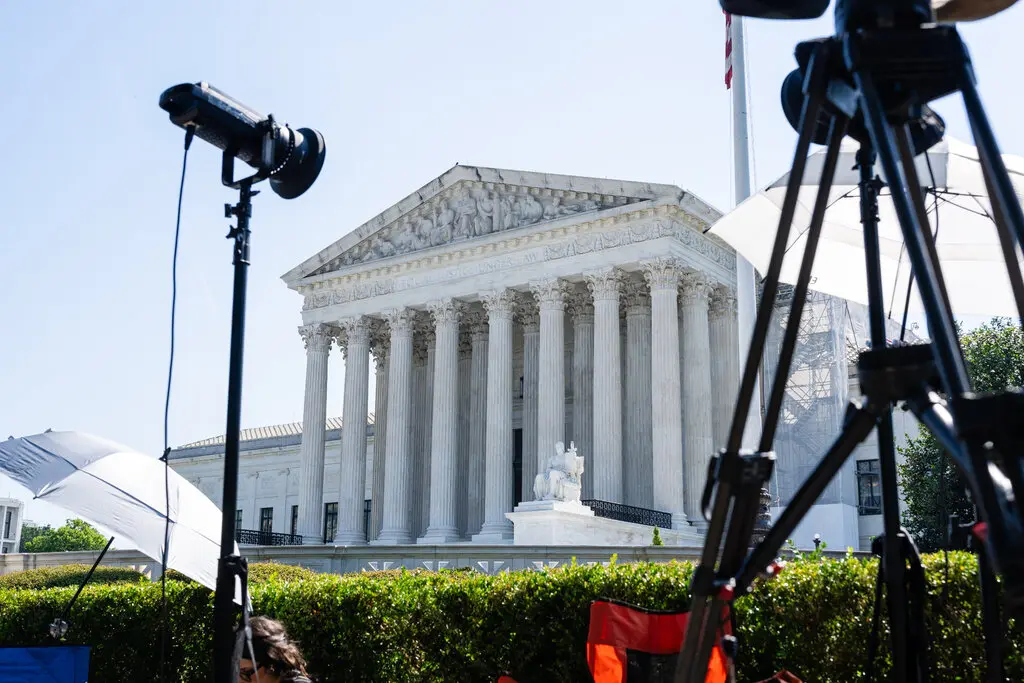
The Supreme Court abortion case set for deliberation is likely to have a profound impact on reproductive rights across the United States. This case could redefine the legal landscape of abortion, potentially challenging or reaffirming key precedents, including those established by the landmark 1973 Roe v. Wade decision. As the nation watches closely, the outcome of this case may shape the future of reproductive healthcare and individual rights for generations to come.
Background of the Supreme Court Abortion Case
The Supreme Court abortion case on the docket originates from a legal dispute over abortion restrictions enacted at the state level. State governments have introduced an increasing number of laws aimed at limiting access to abortion, and this particular case questions whether these regulations overstep constitutional boundaries. At the heart of the matter lies the delicate balance between a state’s rights to regulate medical procedures and the individual’s right to privacy and bodily autonomy.
The law in question imposes stricter requirements on abortion providers and clinics, effectively narrowing access to abortion services for many women. Proponents argue these regulations are necessary to ensure patient safety, while critics contend that they restrict access to essential healthcare and disproportionately impact low-income women. This case offers the Supreme Court an opportunity to clarify the extent of constitutional protections on reproductive rights and potentially set new legal standards for abortion access.
The Impact of Roe v. Wade on Abortion Rights
To understand the implications of the current Supreme Court abortion case, it’s essential to revisit the landmark 1973 Roe v. Wade decision. In Roe v. Wade, the Supreme Court established that a woman’s right to choose an abortion falls within the right to privacy protected by the Fourteenth Amendment. This decision effectively legalized abortion nationwide, with the court outlining a framework that balanced state interests with individual rights across the three trimesters of pregnancy.
Over the decades, Roe v. Wade has faced challenges and modifications, such as the 1992 Planned Parenthood v. Casey case. In Casey, the court upheld Roe but permitted states to impose certain restrictions as long as they did not place an “undue burden” on women seeking an abortion. The “undue burden” standard has since become a pivotal test in abortion-related cases, influencing how lower courts evaluate state-level abortion restrictions.
The current Supreme Court abortion case raises questions about the validity and applicability of the “undue burden” standard. Legal experts are eager to see if the court will adhere to precedent or reinterpret the standard to allow more restrictive state regulations. A shift away from the undue burden test could signal a substantial change in the legal framework for abortion rights in the U.S.
Potential Outcomes of the Supreme Court Abortion Case
The outcome of this Supreme Court abortion case could vary widely, from upholding the status quo to fundamentally altering abortion rights in America. The possible scenarios range from affirming existing protections under Roe and Casey to granting states broader authority to restrict or even ban abortion outright.
- Affirming Roe and Casey Precedents
In this scenario, the court could uphold the core principles established in Roe and reinforced by Casey. This outcome would likely reaffirm that a woman’s right to abortion is protected under the Constitution, and states could still regulate the procedure but would be restricted from enacting laws that place an undue burden on access. However, given the current composition of the court, this outcome is seen as less likely by some legal analysts. - Modifying the Undue Burden Standard
The court may choose to reinterpret the undue burden test, potentially making it more favorable to state-level restrictions. By altering the standard, the court could allow states more leeway in crafting abortion laws, leading to a patchwork of access depending on the state. This outcome would likely preserve a degree of federal protection for abortion rights but significantly alter how they are implemented at the state level. - Overturning Roe v. Wade
In the most dramatic outcome, the court could overturn Roe v. Wade entirely, leaving abortion laws up to individual states. If Roe were overturned, some states would likely enforce near-total bans on abortion, while others would continue to protect access to the procedure. This outcome would profoundly reshape reproductive rights, creating a highly polarized landscape with widely varying access across the country.
Implications for Reproductive Rights and Society
The stakes of the current Supreme Court abortion case extend beyond the legal realm, affecting public health, gender equality, and social stability. If the court’s decision permits broader state-level restrictions, many women—particularly those in low-income or rural areas—could lose access to safe abortion services. This potential reduction in access raises concerns about public health, as women may seek unsafe alternatives in the absence of legal options.
- Public Health Impacts
Restricting access to safe and legal abortion could increase the number of unsafe procedures, which pose significant health risks. Legal scholars argue that by limiting access, the U.S. could see a rise in complications and fatalities associated with unsafe abortions, a scenario reminiscent of pre-Roe America. - Economic and Social Consequences
Limiting reproductive choices also impacts economic equality. Studies have shown that access to reproductive healthcare enables women to participate more fully in the workforce and achieve financial stability. Restricting abortion access could therefore exacerbate income inequality, particularly for women who already face economic challenges. - Effects on Legal Precedent
The outcome of this case could set a precedent with implications far beyond abortion rights. If the court overturns or weakens Roe, it may signal a shift in how the judiciary interprets constitutional protections of individual rights versus state interests. Such a change could open the door to additional challenges on other issues related to personal freedom and privacy.
Public Reactions and Political Implications
The debate surrounding abortion has long been one of the most contentious issues in U.S. politics, and this Supreme Court abortion case is expected to intensify divisions. Public opinion on abortion remains deeply polarized, with advocates on both sides mobilizing in response to the case. The court’s decision is anticipated to have a substantial impact on upcoming elections, as political candidates and advocacy groups make reproductive rights a central issue.
Politicians, activists, and community leaders are already preparing for a range of responses, from legal challenges to grassroots campaigns. If the court grants states more authority to regulate abortion, it’s likely that state-level elections will gain increased importance as advocates and opponents seek to influence local abortion policies.
Conclusion: A Landmark Decision in the Making
The Supreme Court’s impending decision on this critical abortion case will undoubtedly shape the future of reproductive rights in the United States. As the nation awaits the court’s ruling, it’s clear that the stakes are exceptionally high. Whether the court reaffirms, modifies, or overturns established precedent, this case represents a pivotal moment in the ongoing struggle for reproductive freedom and personal autonomy.
The decision will impact not only women’s access to healthcare but also the broader interpretation of constitutional rights in America. With significant social, political, and legal ramifications, the outcome of the Supreme Court abortion case will resonate for years to come, influencing the direction of U.S. law and society alike.
image credit – Eric Lee/The New York Times


